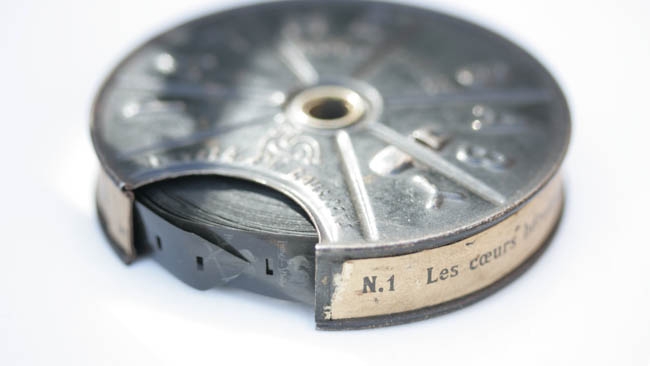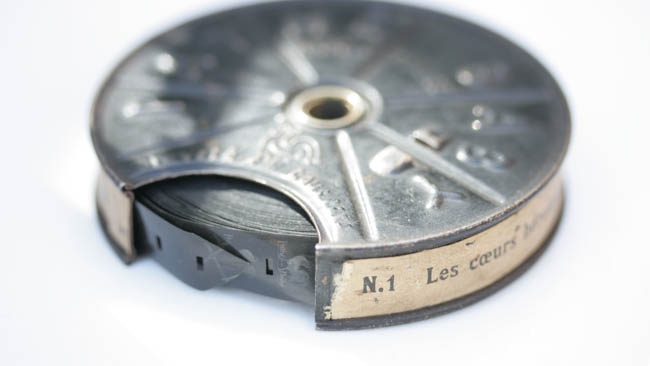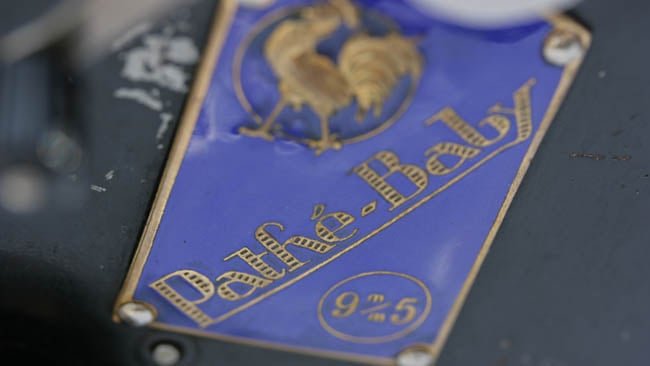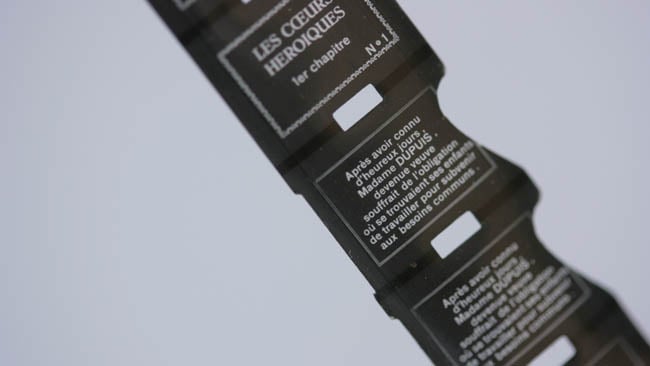

Phil Rhodes takes a look at some of the innovative technology that lay behind Pathé’s 9.5mm film format and the Pathé Baby projector, the Netflix of the 1920s.
It's easy to underestimate just how many riffs there have been on the various approaches to storing moving images. Someone once released an entertaining wall chart detailing all of the formats that existed during the reign of magnetic tape alone (the count is many dozen). In the era of computers, we can come up with exciting new compatibility problems with nothing more than the wave of a mouse, but the early days of photochemical film had format wars as well. The subject of this article is one part of that world which is now almost fully defunct, especially outside its native France. What's interesting, though, is that 9.5mm film, which was introduced in the 1920s, used – wait for it – a form of compression that can reasonably be described as run-length encoding.
As a format, 9.5mm was rather good. The image area of 6.5 by 8.5mm is more comparable with the 7.49 by 10.26mm of standard 16 than it is with any 8mm format, but crucially, three strips of 9.5mm film can be made by slitting (unperforated) 35mm film as opposed to the two of 16mm. It is certainly far better than 8mm or even super-8, and it was only the commercial might of Kodak that made super-8 the winner.
The notorious VHS video format was not the first winner of a format war, nor was it the first to emerge victorious over a technically superior rival (in Betamax). The central sprocket hole in 9.5mm meant an even pulldown, without the skewing common on 8mm formats, although a pulldown claw that missed its engagement would immediately gouge the picture area.
The images which accompany this article are of a projector from the Pathé Baby series, which was introduced in the early 1920s. This particular projector was manufactured in Paris and almost certainly dates from the late 1930s, when the popularity of the format was at its peak.
Unlike the 8mm formats, for which Kodak wanted to sell film and processing services, Pathé's concept was to sell commercially-produced film prints in the 9.5mm format for home viewing. The neat metal can, with revolving inner spool, was clearly intended to make storage and handling easier for the home user, and prints start with the Pathé rooster in much the same way as rental VHS or DVD releases would later include the distributor's logo.

The Pathé Baby system was as close to Netflix as 1920s technology could get. This device was part of the wave of motion picture equipment which displaced the magic lantern as the optical plaything of the moderately well-off, at least in France and the UK where it was most popular. Amateur filmmakers' cameras were eventually produced, and stock remains available to this day from companies willing to slit down 16mm and reperforate the results for the 9.5mm format.
With a limited, four-minute runtime per hundred-foot reel, and the cost of stock as terrifying then as it is now, there were powerful incentives to economise. This is where we find Jacques Pathé getting a bit clever. The example images used here show film representing the opening few seconds of the 1927 production Les Coeurs Héroïques, which originally had a running time of an hour and seventeen minutes. Directed by George Pallu, a prolific filmmaker between 1912 and 1939, the film was – inevitably, for the period - shot silent, in 1.33:1 spherical 35mm. Glancing at a strip of film, it's easy to notice what could be mistaken for damage to the right-hand side of the print (when oriented for readable text).

What's going on here becomes clear when we notice that the title card is only seven frames long, which, even at an 18-frame-per-second silent rate, is under half a second, which isn't much time to read it even if you speak French. These notches, however, are actually a form of compression. A feeler probe in the projector's gate detects the notch and, effectively, pauses the playback for several seconds. Modern file formats such as Quicktime are quite capable of doing this, since they generally specify a playback time for each frame, but it's perhaps more familiar from early video codecs intended for graphics and animation, which were capable of duplicating blocks of image between frames to save on bandwidth. Related techniques are still commonplace in image formats, including PNG and GIF, where identical pixels can be repeated.
Whether the 9.5mm notches really represent lossless compression is a matter of opinion. The static image would have been visible given the frozen grain pattern and lack of jitter, even if the sudden cessation of pulldown clatter from the projector wasn't distracting enough. Whatever we choose to call it, this is certainly an interesting early example of compression in motion imaging. Given the preponderance of title cards in silent films, it was certainly an effective way of saving quite considerable amounts of film.
In many ways, Pathé was a serial innovator. It introduced 28mm safety film as early as 1912, and is still the second-oldest film distribution company in the world, beaten only by their compatriots at Gaumont. Whether they were the first people to popularise compressed imaging in home entertainment is harder to establish, but it's certainly a very early example of the trend.
Tags: Business


Comments